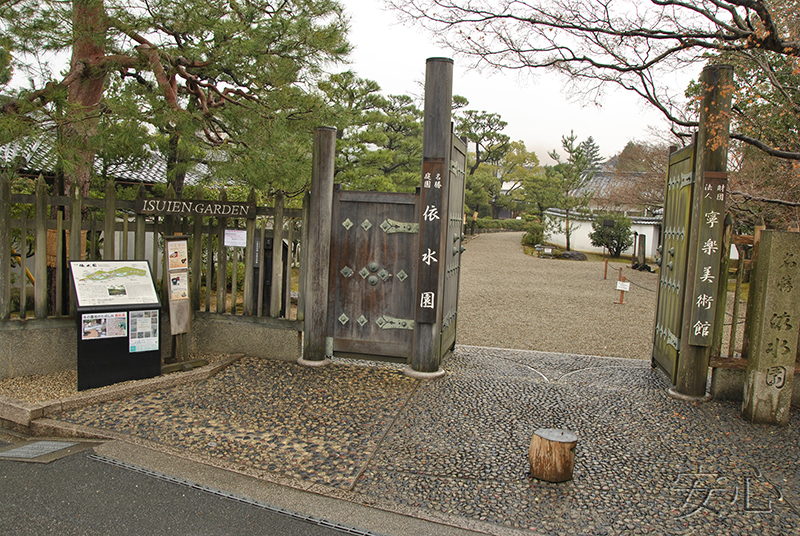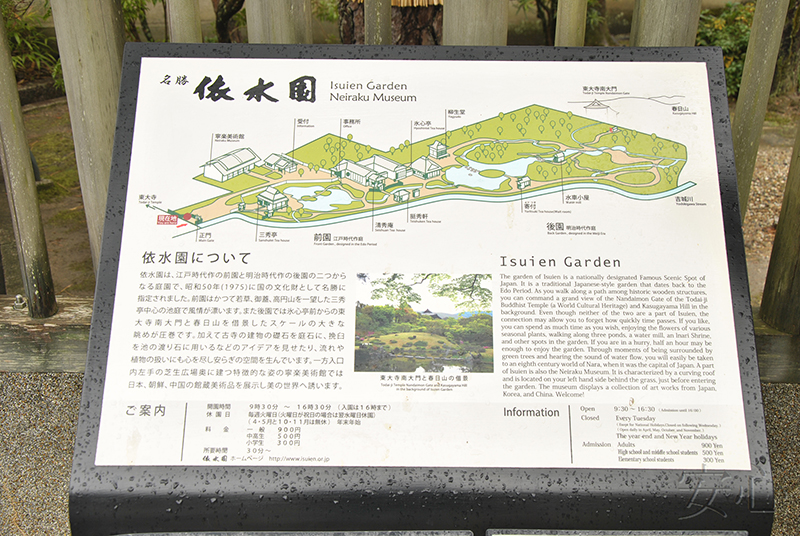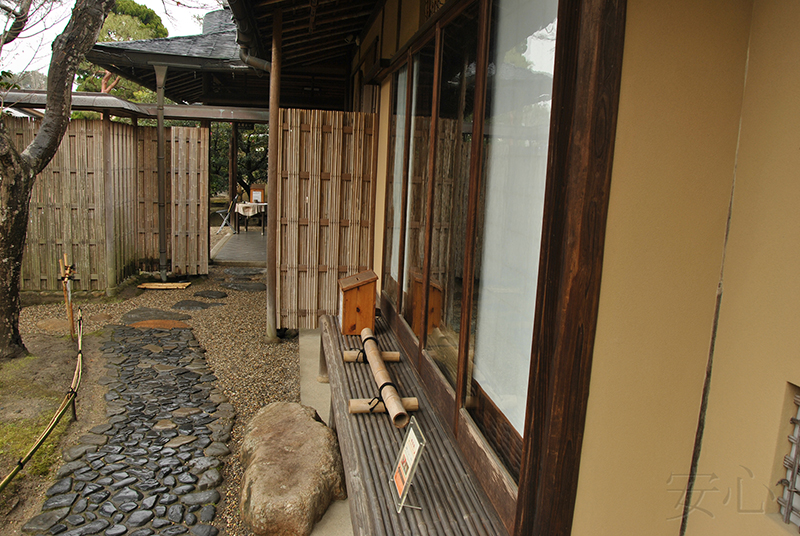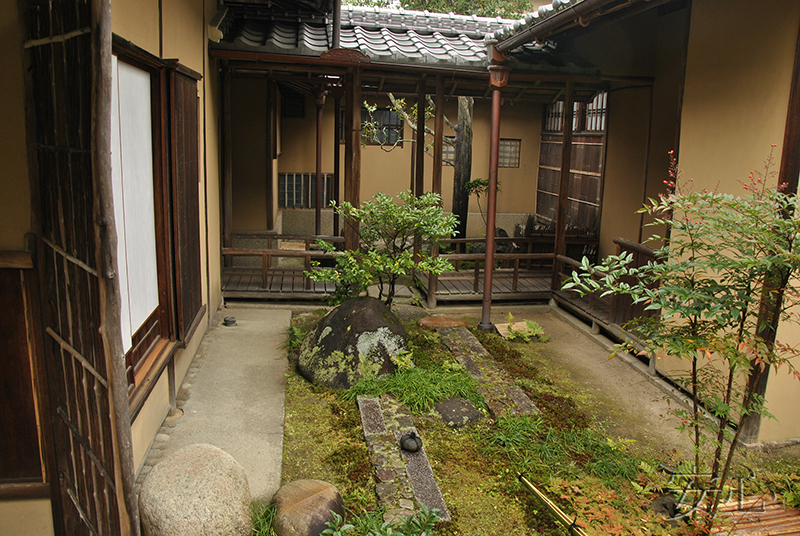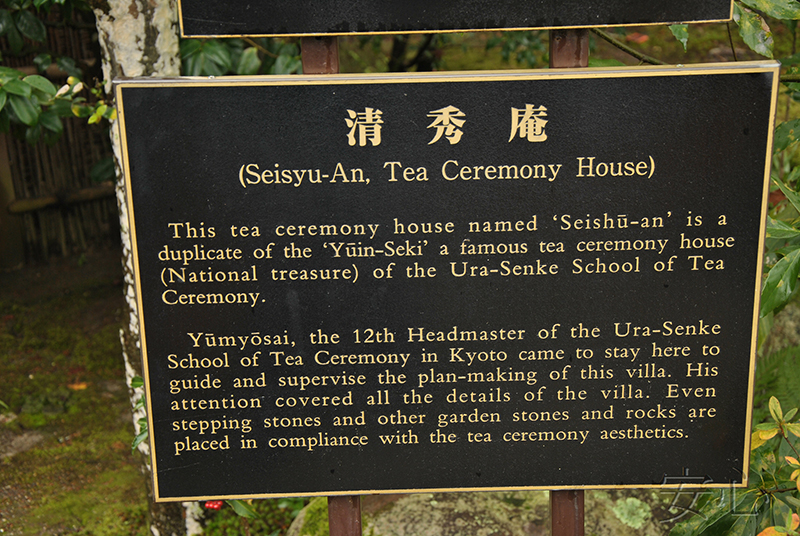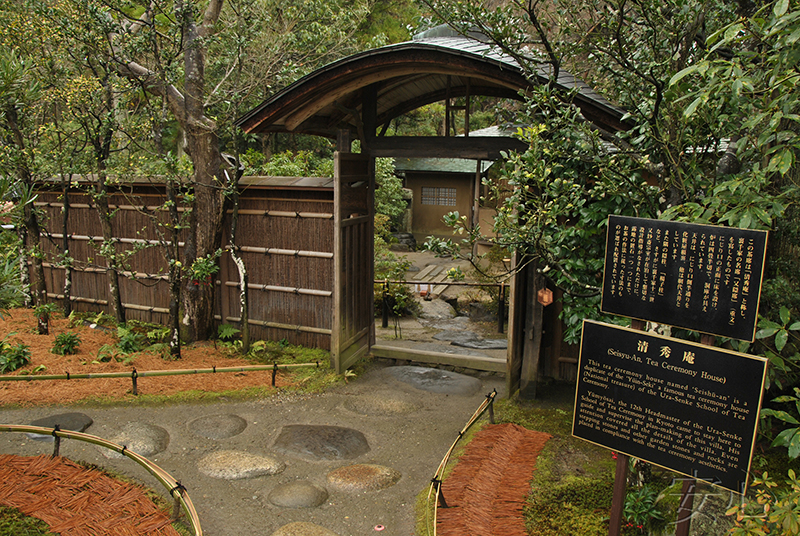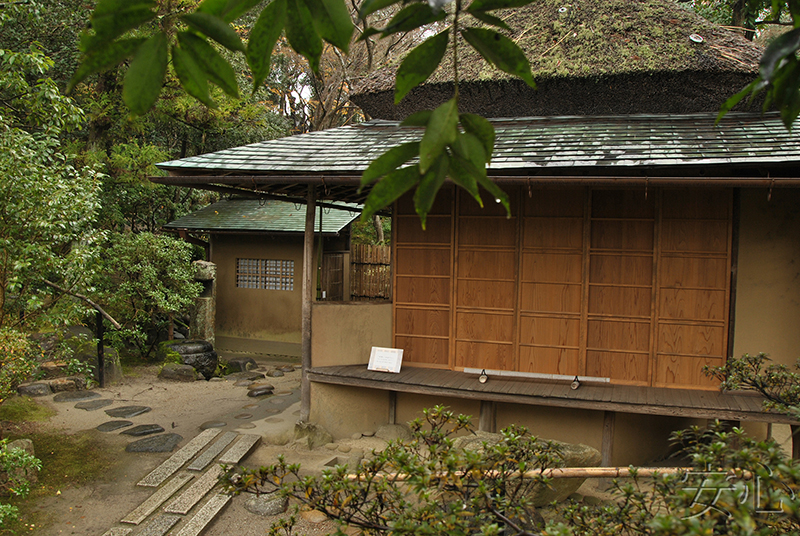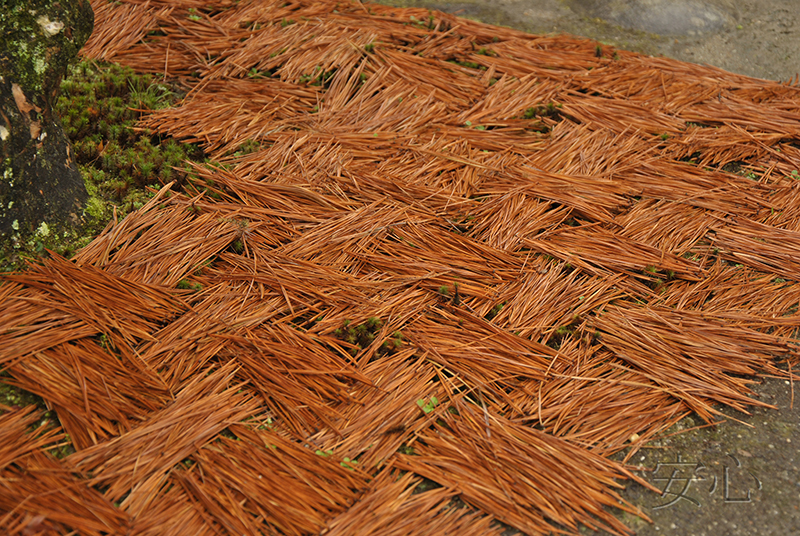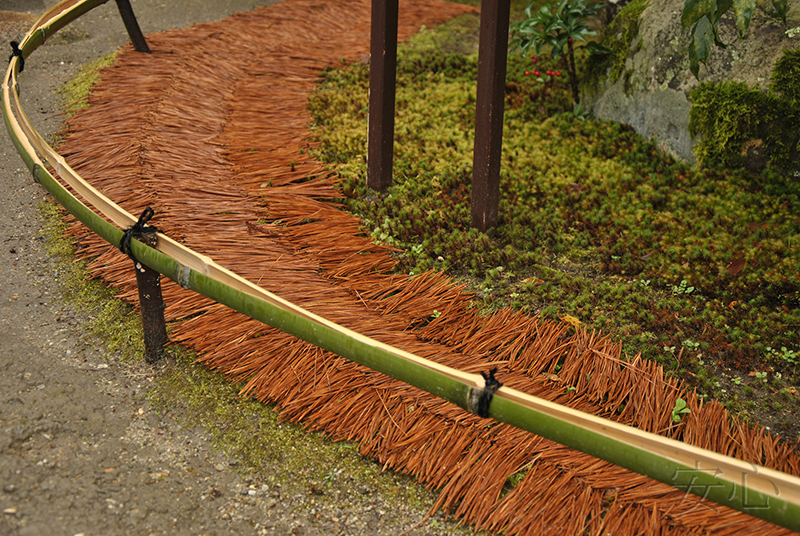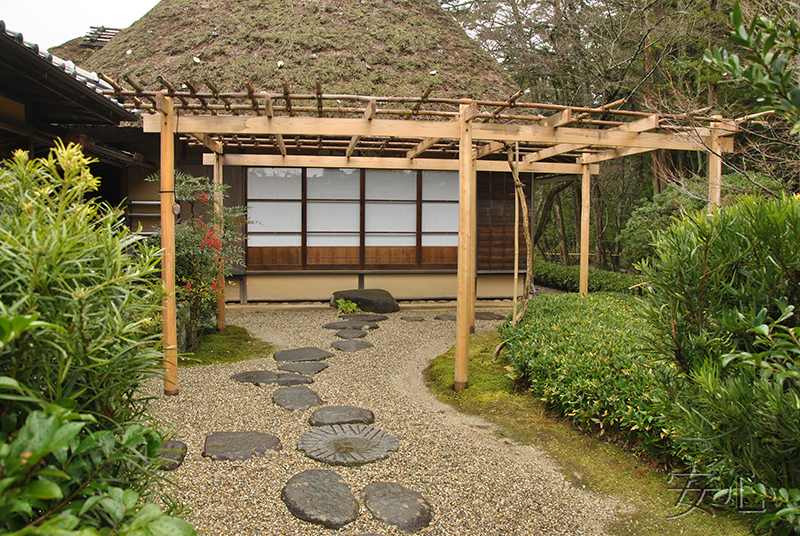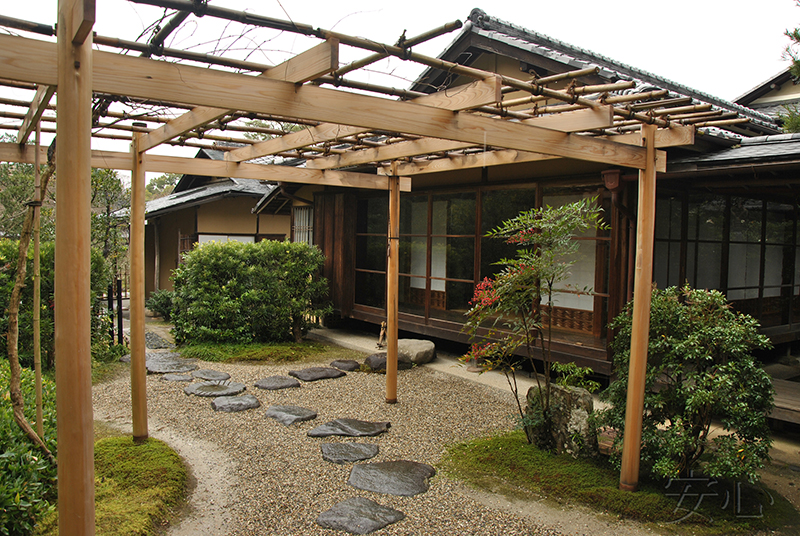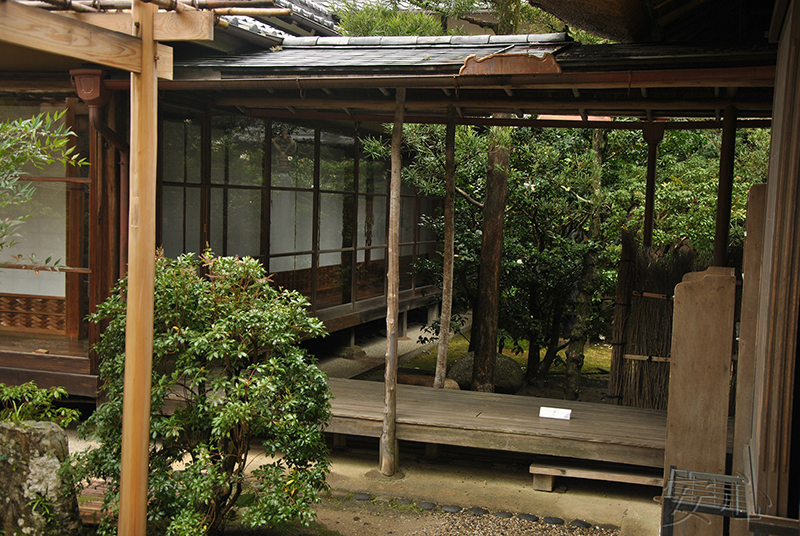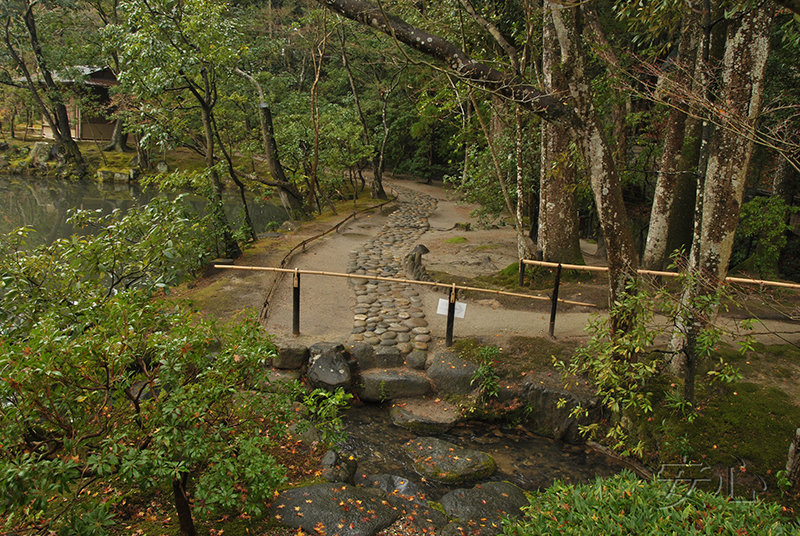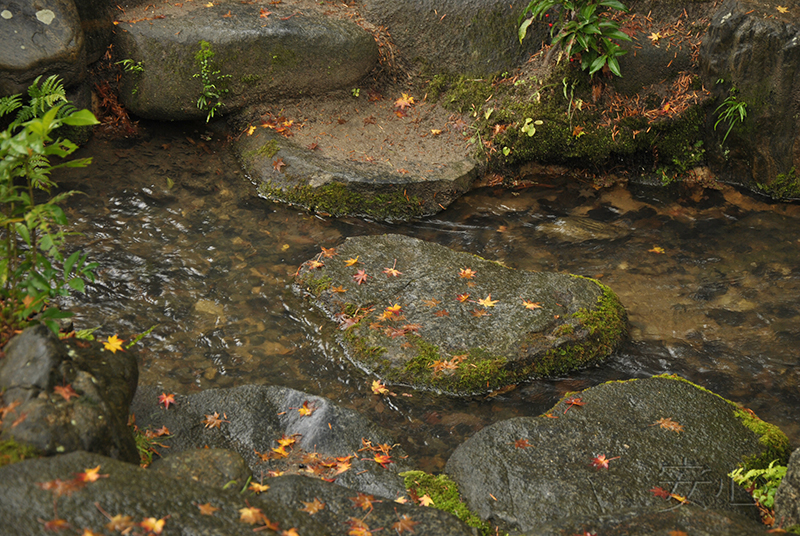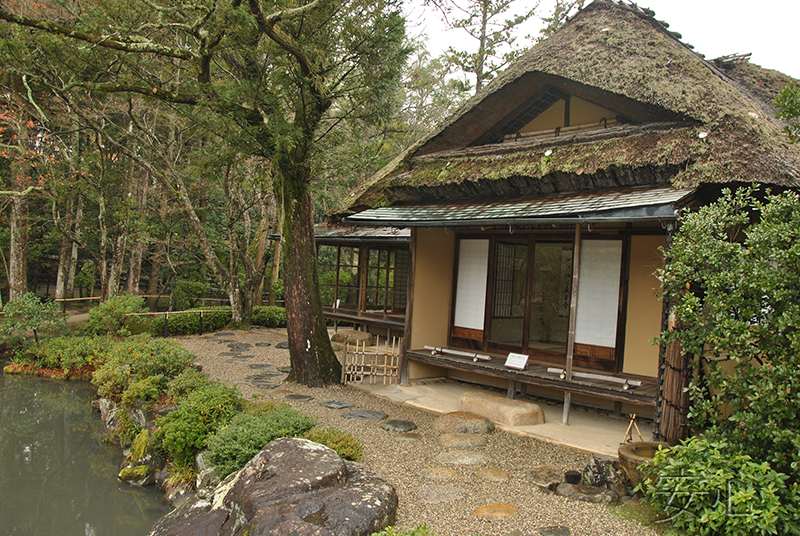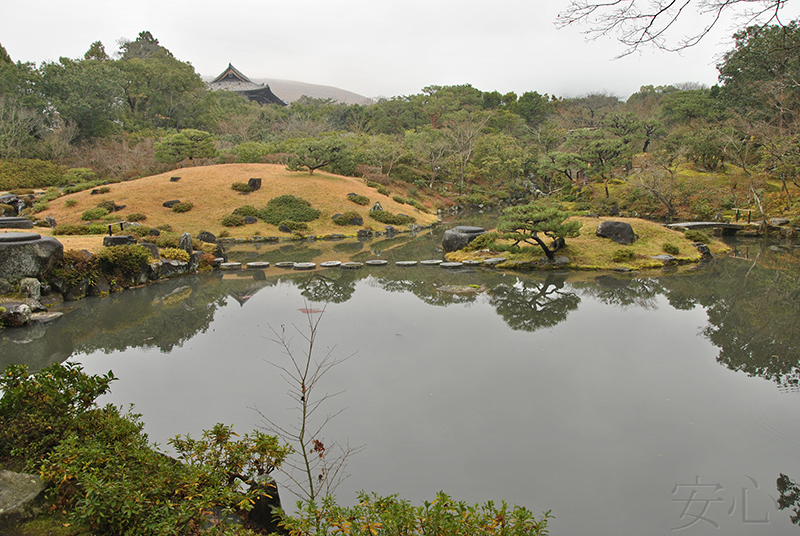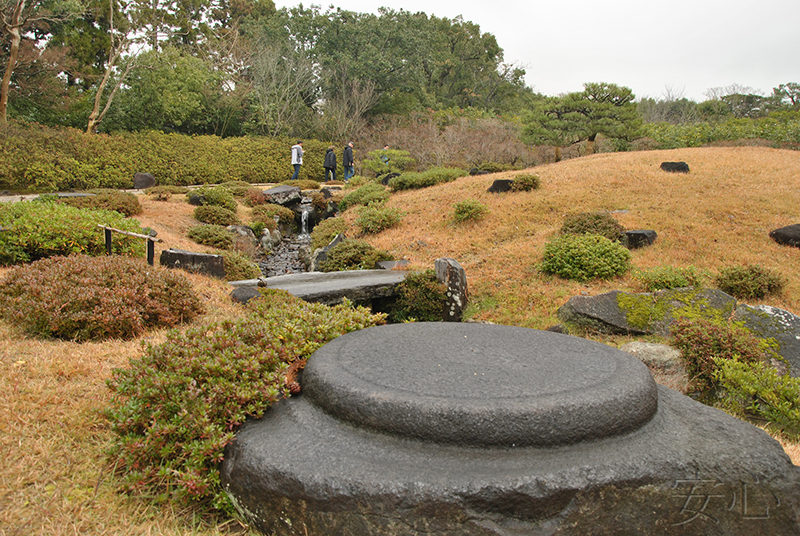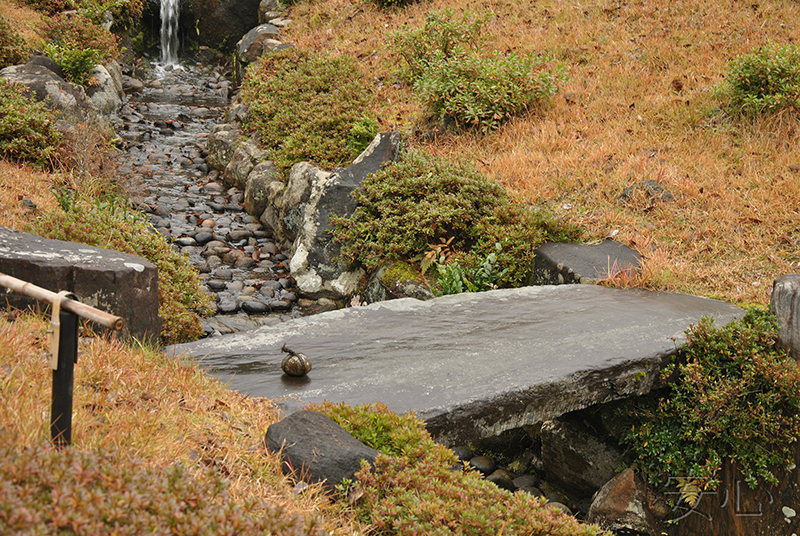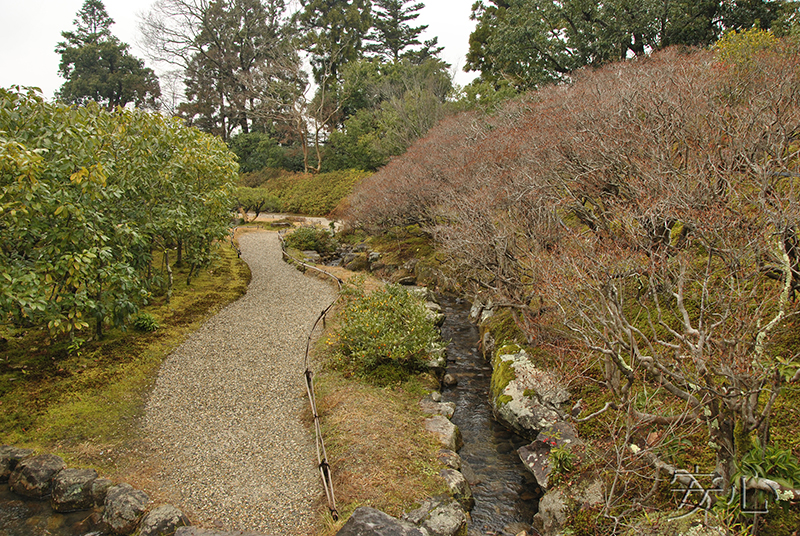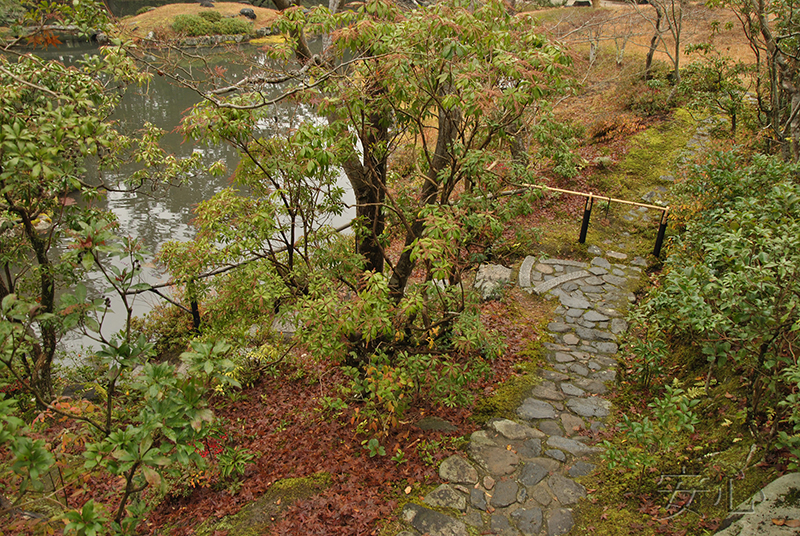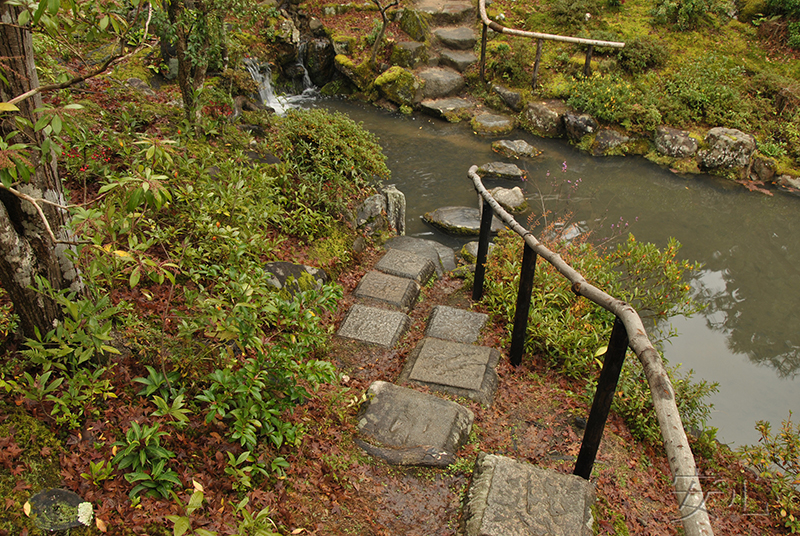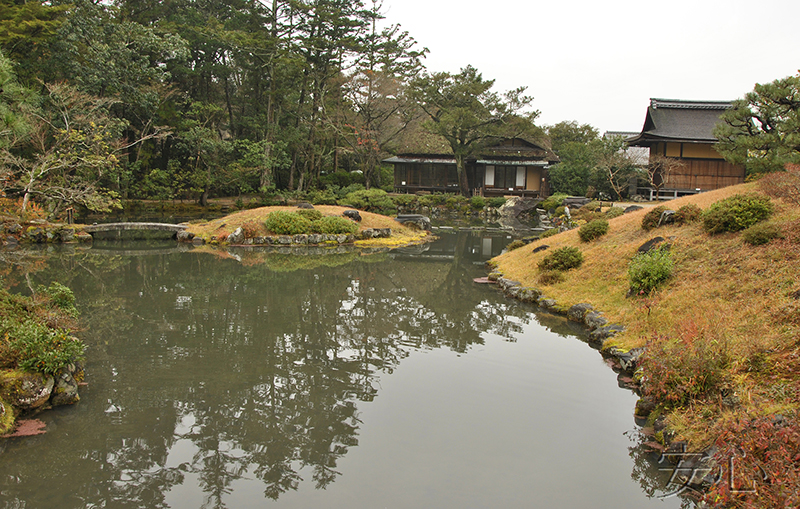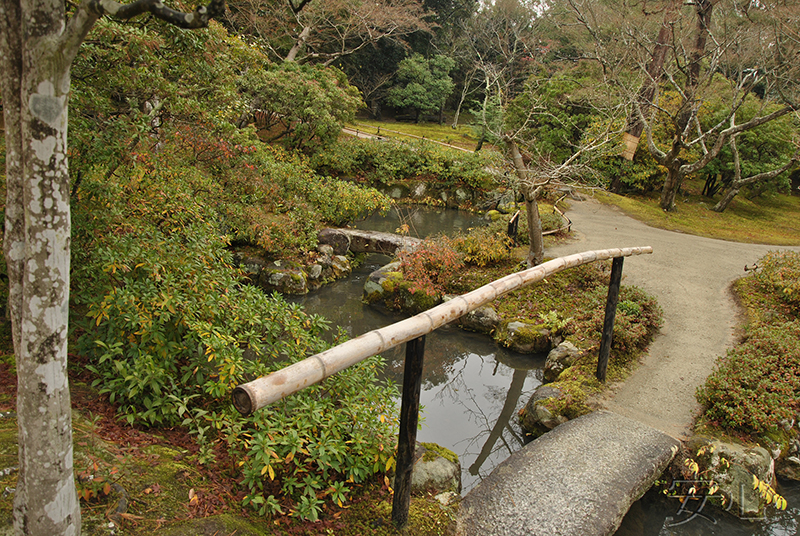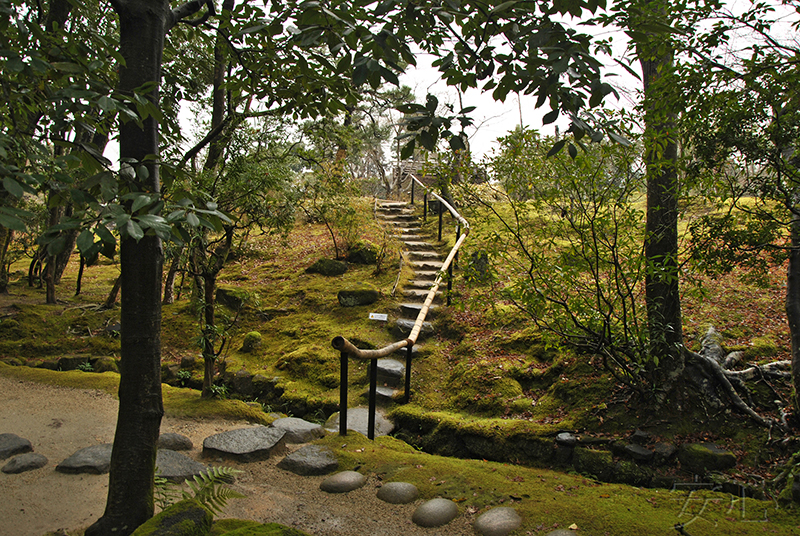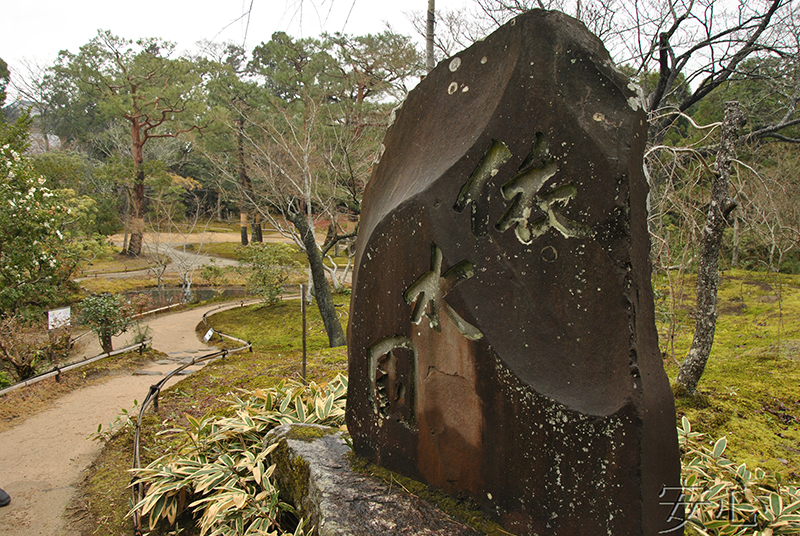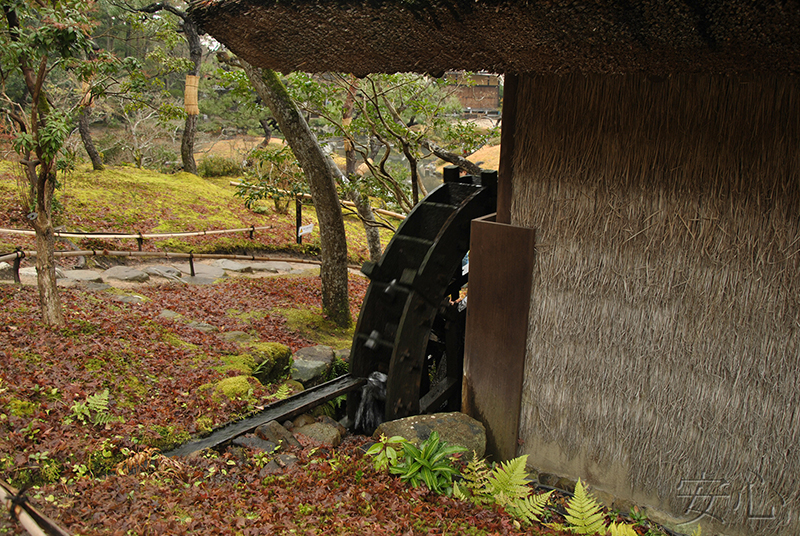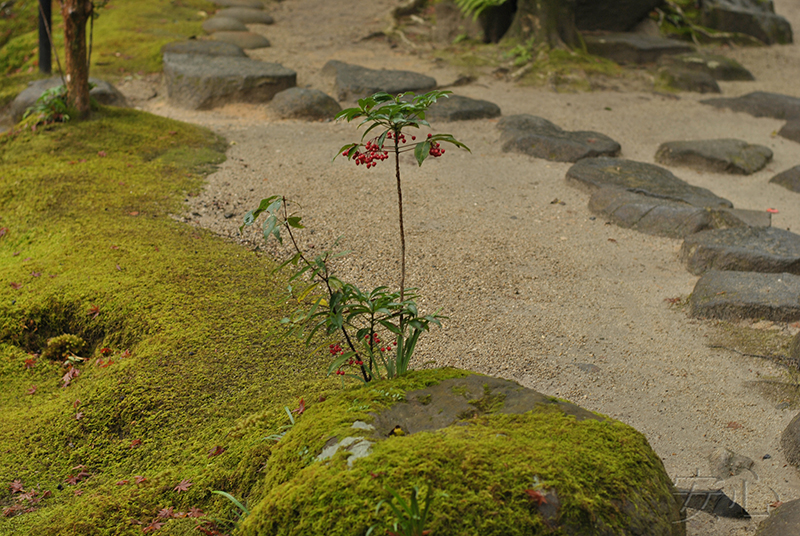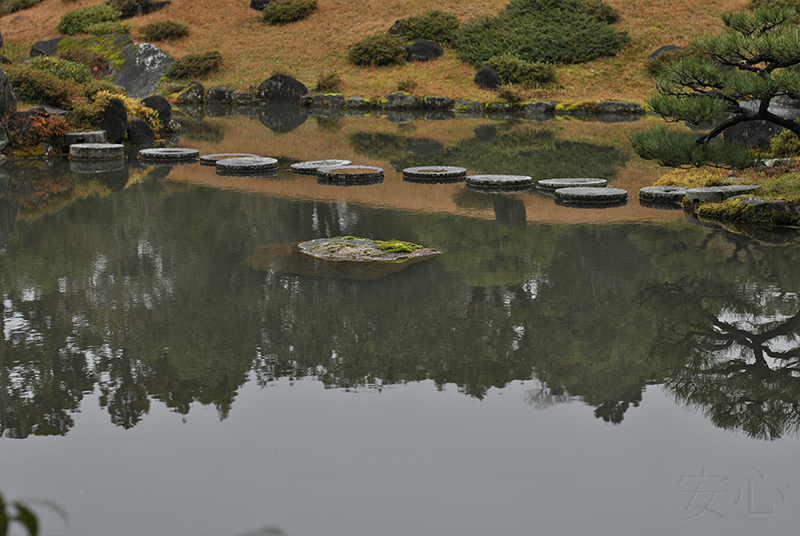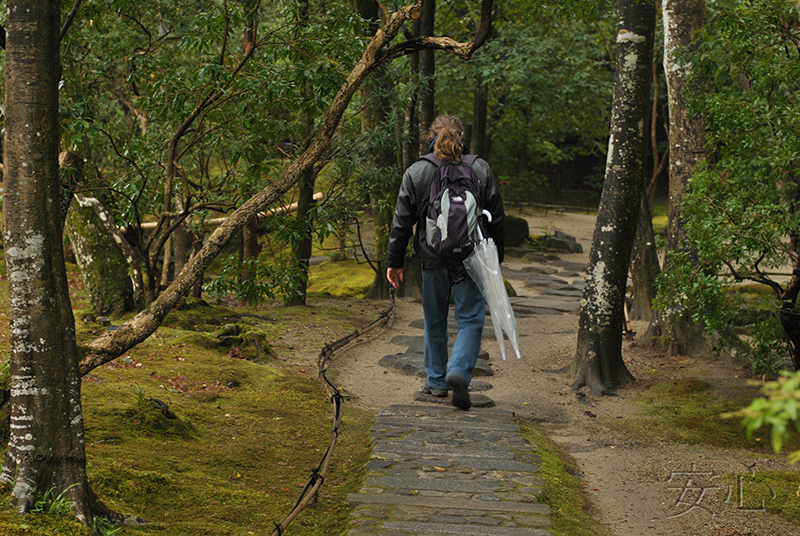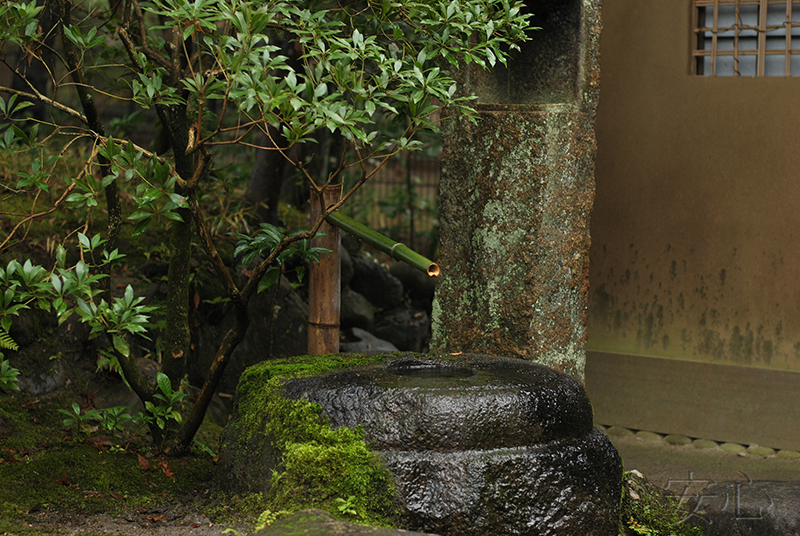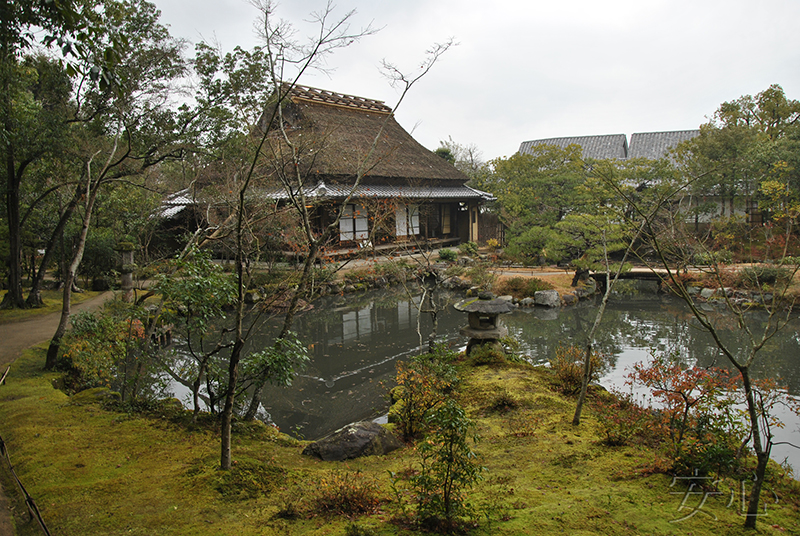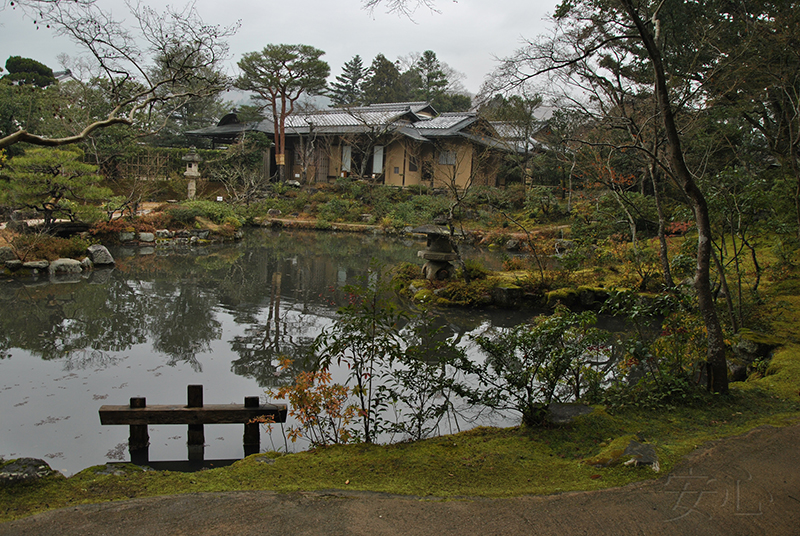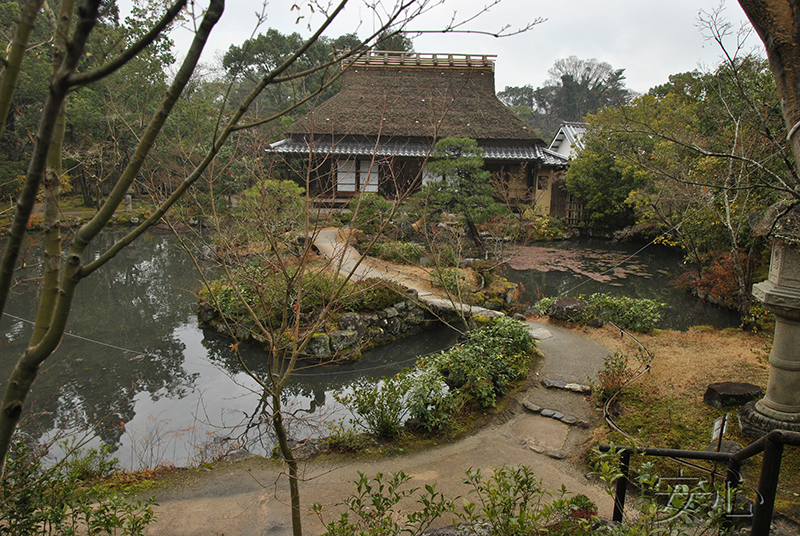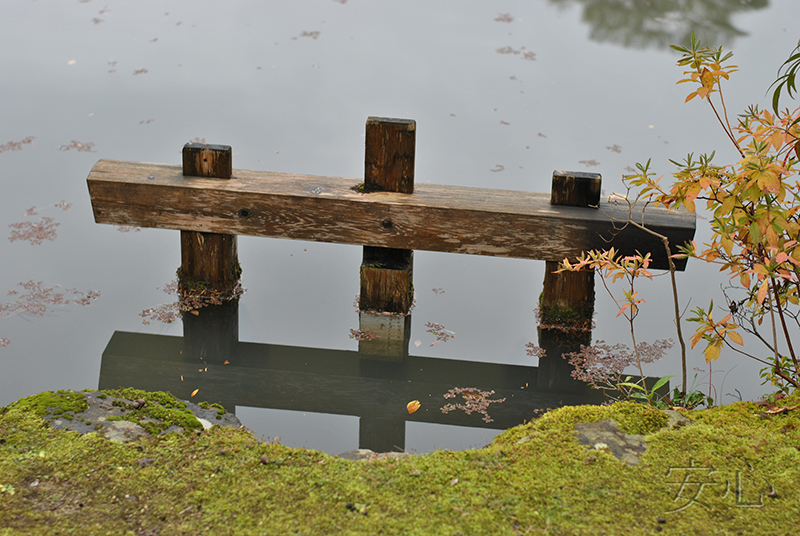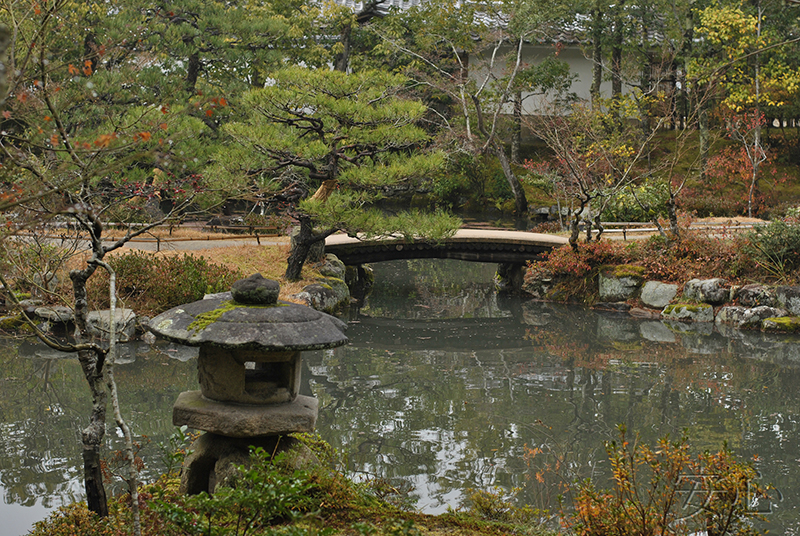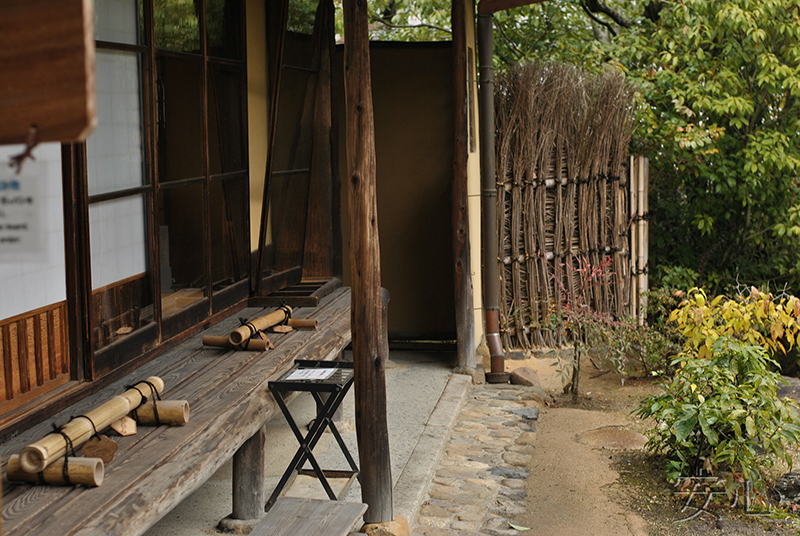
Isui-en garden in Nara
Isui-en garden is located in the center of Nara. Its area is 3 acres (1.2 ha). In 1975, the government declared the garden as a natural sight and opened it to the general public.
Isui-en consists of two gardens for strolling created at different times. One belongs to the Edo period, the second is to the Meiji era. There is also a small museum on site that for Japanese ceramics.
At the entrance to the Isui-en territory, there is a stand with brief information and a plan of the garden.
Then you need to go along the wide road to the office where you buy entrance tickets.
There we met a female guide who offered her services (free of charge), but we wanted to wander around the garden by ourselves, stopping in different places, sometimes for a long time. Therefore, we refused, although perhaps it was not right desition.
The office is in the middle between two gardens and you can choose where to go, left to the back garden (more modern) or right to the front garden.
The office building itself looks very nice.
There is also the Seisyu-an Teahouse with a pretty courtyard. It belongs to the front garden.
Through the open gate we could see another teahouse, Teishuken. But it was impossible to enter there.
A stream flows right before the house.
The passage on the bridge was blocked by a sekimori ishi, stone prohibits further movement. However, we could not enter the gate either.
In the far corner, a stone lantern and a tsukubai could be seen.
We were especially impressed by the approach to the gate. The ground was covered with pine needles neatly arranged in patterns.
We decided to start from the so-called back garden. It was created in the early twentieth century by the designer Seki Tojiro. The garden was conceived as a place for tea ceremonies and poetry competitions. This part of Isui-en is said to have been inspired by the Murin-an Garden in Kyoto made by the famous Ogawa Jihei.
We walked to the garden. On the way, we met a nice courtyard.
After a while, we came out to a large pond. Stepping stones were laid across the stream on the right, but the passage was closed. Thus, visitors are directed to the other, opposite side.
On the shore is the Hyoshintei Tea Garden.
To the right of the entrance is a small bowl with water.
The pond is quite large and complex in shape. The author skillfully used the Kasugayama Hills visible at the distance, including them into the garden. Also from here you can see the gate of the Todai-ji temple - Nandaimon.
In the center of the pond there is a small island. Stepping stones laid on the water lead to this island. Actually, instead of stones here are millstones.
Our attention was drawn to two large stones with a smooth top. One of them is located near the island, the other is on the shore. Apparently, they were also used for something before, but for what? Now the stones are perceived as bright accents, places from which it is good to explore the garden.
The entire space is literally permeated with streams. Some bridges are decorative, others are walkable.
The banks of the streams are fixed with stones of different sizes, making the coastlines seem more winding than they really are.
On the other side of the road, there are massive of shrubs, both deciduous and evergreen. But bushes without foliage in winter also look great because of their interesting graphics.
There is something interesting at every step, at every turn.
Going down one of the stairs, we found small waterfall. On the other side is the mill.
From here, an excellent view of the tea house opens, from where we began our walk. To the right is the Yagyudo Pavilion.
In cold weather, in winter, we did not dare to cross the stream over stones. In addition, the stones could be slippery from the rain. So, we went around.
The moss seemed especially bright and soft from the drizzling rain.
In fact, we walked around the entire garden and moved in the opposite direction, but on the other side of the pond. This path leads to the exit, and the stairs up go to that mill.
We found a small structure of moss-covered stones and bamboo near the tree. Apparently, this is how they decorate something, perhaps some kind of well.
We went up the stairs. From this place we could clearly see the paths along what we have just passed. And we also found a large stone with hieroglyphs carved on it.
From here we could have a better view of the water mill, and to go around it from all sides.
The waterfall was also better seen from the right bank.
At this, the walk in the rear (modern) garden was finished, and we went to the place where we came from.
The front garden was established in 1670 by Kiyosumi Dosei, a successful merchant who lived in Nara. He built his villa here, the Sanshutei and Teishuken tea houses, to enjoy sencha tea.
The first thing we saw was the Teishuken tea house. Just the one we couldn't reach before. But now we were on the other side.
Here you can read about the tea house.
We approached the tsukubai we saw through the gate at the very beginning.
After the tea house, we went to the pond of front garden. Its area is not as large as of modern garden, and almost the entire territory can be seen from one place. The large building on the opposite side is the Sanshutei Tea House.
The entrance and office are visible from this side.
There are two islands in the pond, Turtle Island and Crane Island. Unusually, a path goes through these islands, dividing the pond in two.
We wondered what this device was for, and came to the conclusion that the middle part of this structure is a damper that opens the drain of water. Graduations can be seen underwater to determine the level.
And this hut cover the overflow pipe. You can hide the pump under it as well.
There are many beautiful lanterns in the garden.
If the day wasn't so short in winter, we would have walked in this garden for a long time. But, unfortunately, it gets dark in Japan at five in December. It's a pity. We loved the garden. It was quiet, fresh, sometimes it rained. This kind of weather suits Japanese gardens very well. Although it would be interesting to see it in other seasons.
Garden Information:
Address: 74 Suimon-cho, Nara City
Opening hours: from 9.30 a.m. to 4.30 p.m.
Closed: Tuesdays (open daily in April, May, October and November), closed on New Years holidays
anshin©2011All rights reserved. When using the materials of the site, reference is obligatory.
Proposals for co-operation, as well as comments and suggestions on the site please send to the address: anshinsad@gmail.comtel: +7 (965) 121-80-60, 10am-20pm
